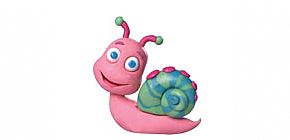Infant Development
A Tiny Drop (Tip Tipa) of Information on Infant Development
From the moment your infant is born, they begin to respond to their environment. And with every passing day, they learn how to activate and act upon their senses: they hear their mother, especially her heartbeat, which enables them to calm down. They learn to taste breast milk for the first time, and after a few weeks, they begin to see what goes on around them. At this stage, their bodily system does not yet resemble that of a mature adult: their digestive system is in its infancy (lit!), which can cause gas.Your infant can only see objects placed within 30 cm of their eyes, especially shadows and blurry items - and cannot control their extremities.
What is the expected developmental path your infant will take in the next few months? Here is a list of developmental milestones according to various age groups.
It is important to remember that these are general capabilities; each child develops at their own rhythm. Developmental delays are only determined by your infant’s pediatrician or other certified professional.
Infant development in their first month of life - What to expect?
At this age, infants start gaining an awareness of their body parts. As such, it is important to hold and lay your infant down in various positions: on their back, stomach, both sides, etc. Talk to your infant a lot and ensure they can turn their head from side to side.
The Health Ministry recommends that infants take a daily dose of Vitamin D, from birth until their first birthday. Select a Vitamin D that is specially formulated for newborns, in a convenient drop form - like CTS TipTipot Vitamin D
Infant development from one to three months old - What to expect?
Once infants completes their first month of life, they begin to discover that they can control their hands, which they start moving and waving from side to side. While laying on their stomach infants can raise their heads to a 45 degree angle, and hold it there, stably. At this age, infants can also follow various objects with their eyes, smile to their parents and stuff their hands into their mouths.
Recommended developmental activities for infants aged 1-3 months:
Present your infants with soft objects or toys and try and get them to follow them with their eyes. To help them get better acquainted with their hands and legs, bring their hands close to their opposite legs, or gently massage their extremities. Make sure to lay them down on their belly, to help strengthen their upper body, which will help them crawl down the line. If they have a hard time, try and lay them on their belly for multiple short periods of time throughout the day. Continue to hold them in various positions, including while feeding/nursing. Speak to them a lot and sing songs aloud, so your infant will begin recognizing your voice and responding to their name.
Infant development until the age of 5 months - What to expect?
At this age, infants can usually roll from stomach to back, and will later learn to roll from back to stomach as well. They learn how to hold objects in one hand, transfer objects from one hand to the other and stick them in their mouth. This is an important stage in the development of coordination: do not prevent your infant from putting (safe) items in their mouth.
Recommended developmental activities for this age:
Present your infant with items of varying textures: let them touch grass, sand, carpet, plush dolls and more. Help them bring their hands to the center of their body, so they can learn to clap. Continue to help them cross their extremities: in a short time, they will learn how their hand can hold their opposing leg. Continue laying them on their belly, and provide toys they can try and reach for with one hand, while transferring their weight to their other hand. The ability to shift weight from hand to hand will help them when learning to crawl. To encourage your infant to roll from stomach to back, try out the following exercise: move their right hand so that it fits below your infant’s chest while they lay on their stomach and hold their left arm. With your left hand, hold your infant’s right thigh and try and bring your two hands together, until your infant slowly moves to lying on their left side, until they flip over completely..
Infant development until age 7 months - What to expect?
From this age, infants try their best to move forward towards objects or toys. Some infants start crawling on their bellies, while others start off trying to crawl using their knees. Both ways are normal and correct. Sometimes, infants start off crawling backwards, but this is also no cause for concern. They will eventually learn to move forwards as well. At this age, infants will also try and sit up. Sometimes, sitting starts off as a backwards shift of weight, while other times, infants move into a sitting position from the side. If your infant sits on the side, ensure they can lean back and sit up from both directions.
Recommended developmental activities for this age:
Allow your infant to crawl or stand - even when outside. Crawling and standing on varying surfaces will help them hone their skills. Avoid buying first walkers (shoes): they inhibit their sensation when moving about and should only be purchased once your child is stably walking for a minimum of one month. Offer them toys and other stimuli that encourage fine motor skill development: stringing toys, blocks, etc. to help them gain better hand control and hand-eye coordination. You can also encourage fine motor skill development by allowing your infant to feed themself - bread, cookies, etc.
Infant development until their first birthday - What to expect?
At this age, infants already know how to crawl, sit, stand and will soon try to walk. Encourage them to try walking at home and outdoors. At this age, they can interact with their peers and you can take them to playdates. While they will mostly play side by side, they will enjoy the company. Social activity greatly contributes to your infant’s development.
Recommended developmental activities for this stage:
To encourage your child to let go of the furniture and stand on their own, try and stand behind them and turn their attention to a toy or soap bubbles. Having them turn back will encourage them to remove one hand from the furniture and turn towards you. The time for the ‘bimba’ (riding toy) has arrived: at this age, some infants have a need to push forward - offer them a riding toy, walker or doll. Try and dress them while they stand, doing so will team them to shift their weight from leg to leg.
It is important to remember:
You cannot speed up proper infant development. You can help, entice or practice, but it is very important that your infant develops naturally. The best help you can give your young child is to avoid making comparisons and support your child’s developmental process by exposing them to new stimuli and offering tons of positive reinforcement. If you are concerned that your infant is not developing properly, you can consult a pediatrician, child physical therapist, or the child physical therapy experts on Tiptipat Chalav’s Facebook Page on Thursday afternoons.
Other articles on this subject:
Keeping your infant healthy isn’t always an easy task: the variety of foods, nutritional supplements and medications is tremendous, and selecting the healthiest products for your infant is not always straightforward. So, how do you know what to give your infant? We’ve gathered the Health Ministry’s guidelines into a neat, informative article.
|
Circumcision is an important ceremony in the Jewish religion. No less important: caring for your infant following the big event. How should you prepare? How should you care for baby? What to avoid? Everything you need to know to reduce stress before your infant’s circumcision, right here.
|
From the moment your child first enters the Tipat Chalav (well baby check-up clinic) system, you, the parent, will learn all about growth curves. What do percentiles mean and how does proper, healthy nutrition help maintain proper weight in infants? Everything you need to know, right here.
|
Age two is an important stage in your child’s life, and as with every period, it has its challenges, including: temper tantrums, growing pains and social issues. How are you to cope with it all?
|
Fever reducing medication, a humidifier to relieve stuffy noses and creams to treat the skin - everything you should have in your infant’s toiletry closet.
|
Aside from the Holy Trinity: crib, changing table and stroller, infant supply stores offer a wide variety of products. As such, it’s a good idea to make sense of it all: what is recommended to prepare before the birth, what is not necessary, what phenomena might your infant suffer from and how can you relieve said suffering by preparing your home ahead of time?
|
Are you allowed to drink coffee? Should you avoid dairy products? Can you continue eating legumes? Many mothers are unsure of what they should - and shouldn’t eat while nursing, especially when their infants suffer from gas. It is important to note that the link between maternal nutrition and infant gas has not been scientifically proven, though mothers who have attempted dietary modification do report experiencing success. Worth a try, isn’t it?
|
Circumcision, teething, vaccinations, relentless viruses, growing pains and whatnot. From birth, infants cope with pain and sensations that result from a variety of causes. We, as parents, need only to identify what hurts and do our best to relieve the sensation.
|
One of the first steps your toddler will take towards independence, is going to daycare. The challenge manifests on an emotional level, as well as by influencing their immune system, which now has to cope with viruses and other infections. How can your little one adapt to daycare while maintaining their health? Everything you need to know, right here.
|
When we, as parents, search for the answer to the question of when it’s time to start introducing solids into our infants’ diets, we come across endless approaches. Just as with the subject of infant sleep, I would like to use this article as an opportunity to present you with some of the various approaches and shed a light on how you can choose the method that suits you best.
|
Parents will do anything for their children - they’ll cross continents and seas, harvest the moon and starts, fly to the moon and back etc. just so their infant isn’t lacking a thing. When parents seek out clothing for their infants, they surely know just how important undergarments are - no less than the clothing worn over them (sometimes, undergarments are even worn on top!). It is natural and reasonable to want your infant to be dressed to the nines, but undergarments serve important functions you must not dismiss: they absorb, warm, and ensure your infant is pleasantly comfortable.
|
As new parents, you’ll want to ensure that your infant is lacking in nothing, from the start. Yet, when it comes to buying items for your little ones, you’ll quickly discover that the sky’s the limit. How can you shop smartly, without stumbling upon unnecessary expenses? Read on to find out.
|
Familiarizing yourself with the principles of infant resuscitation will enable you, the parents, to help your infant and even save their life, should they stop breathing. In this article, we’ve created an organized list of basic first aid and resuscitation steps.
|
“Infants see backwards,” “infants are born color blind,“ “infants only see grey” - those are just some of the popular myths surrounding infant eyesight. And, as to be expected with myths, most don’t have much truth to them. Let’s examine the subject of infant eyesight and its development, a little closer.
|
Is it raining outside and the floor’s cold indoors? You can still encourage your little ones to develop and crawl. Read our tips here
|
- 1
- 2



.jpg)
.jpg)
.jpg)
.jpg)



.jpg)
.jpg)
.jpg)
.jpg)

.jpg)
.jpg)
.jpg)
.jpg)





.jpg)
.jpg)

.jpg)
.jpg)
.jpg)
.jpg)
.jpg)
Contact us